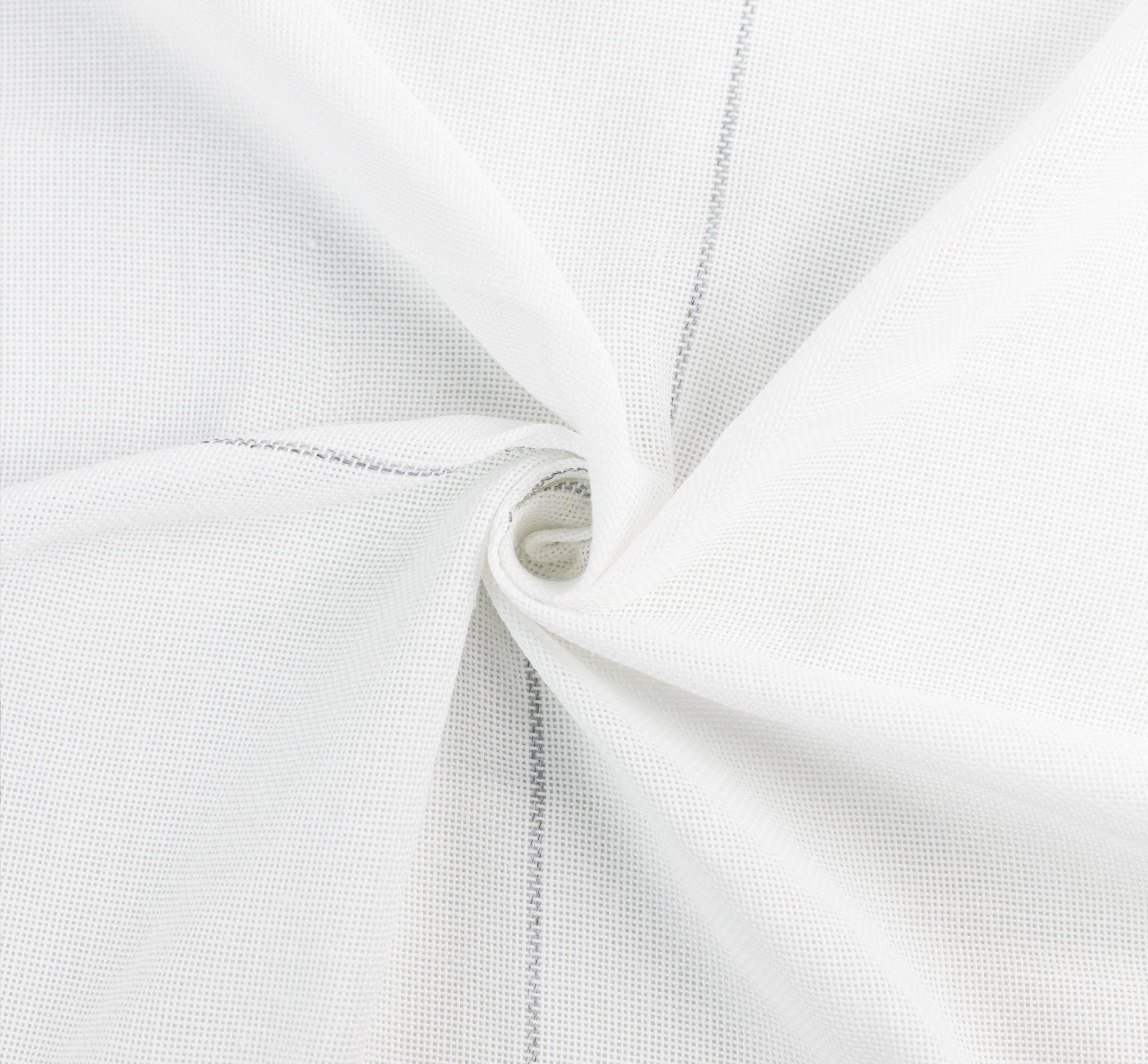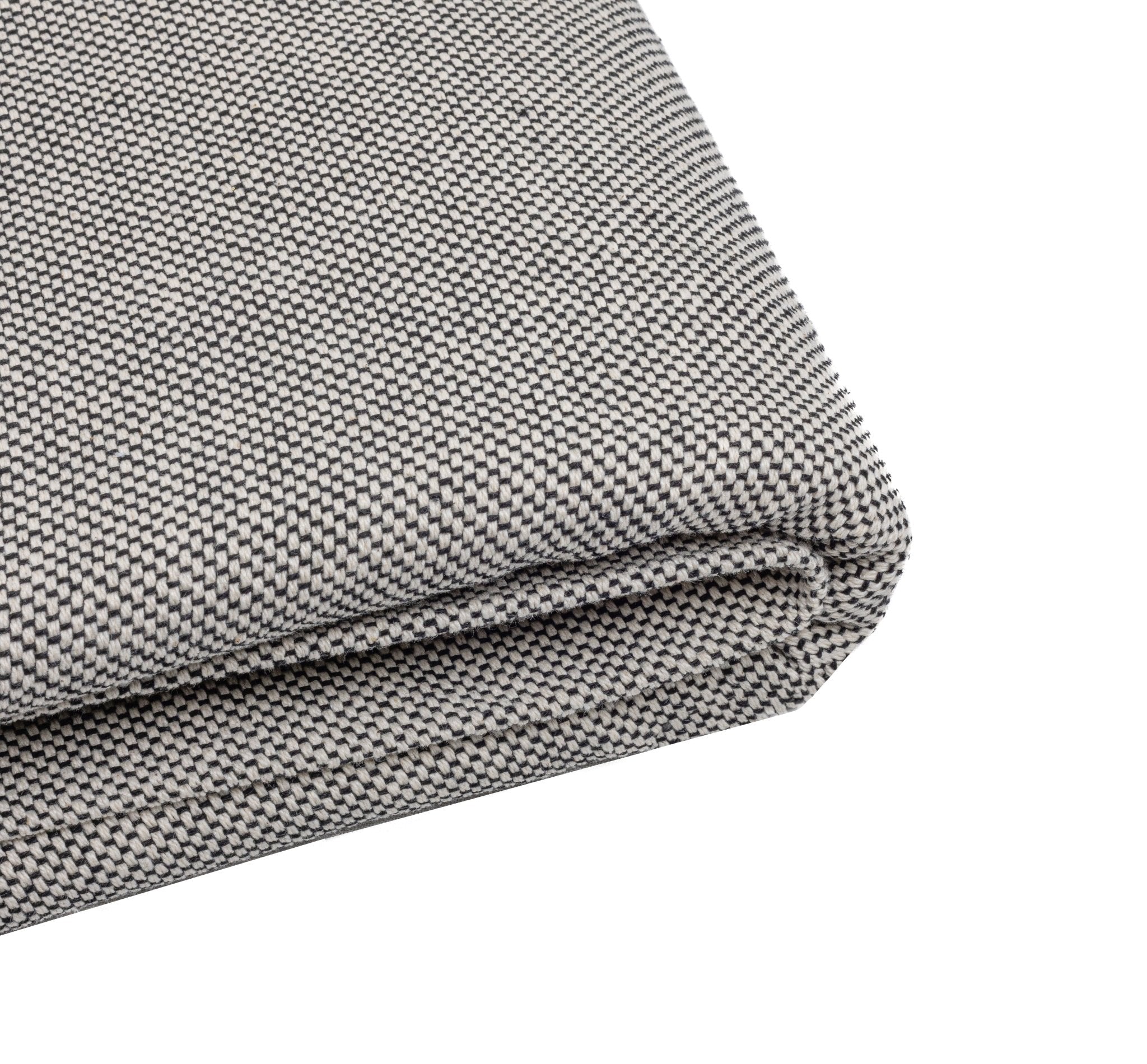For your tufted projects, we offer different types of professional quality fabrics. Two main categories of fabrics exist: primary fabrics and secondary tufting fabrics. Complementary, they are essential for your tufted projects.
The different types of fabric for tufting
Tufting is a technique of tufting yarn, in wool or acrylic , through a base fabric stretched over a frame. This fabric is called primary fabric for tufting, monk fabric or monk cloth. To tuft you will most often use a tufting gun . The importance of the primary tissue is therefore considerable. Impossible to create without it. The premium tufting fabric is available in white or gray colors and is made from polyester. The white tufting fabric with yellow lines spaced every 5 cm is made from a mixture of cotton and polyester. Flexible and robust, they are intended to withstand the pressure of the tufting gun. Well thought out, they have a marking that serves as a reference when you create patterns or designs.
The different types of finishing fabric
Finishing fabrics are so-called secondary fabrics. They intervene once your creation is finished and have a double role. On the one hand they improve the aesthetics of your project, and on the other they extend its life. Whether made from a blend of cotton and polyester, or 100% premium cotton, finishing fabrics are placed on the back of your work and will be used to:
- Hide the threads behind the base fabric;
- Strengthen your work and therefore extend its lifespan;
- Provide a non-slip effect depending on the model selected.
Now all you have to do is make your choice!
FAQ - Tufting Fabrics
-
- Yellow line fabric : Made of 70% polyester and 30% cotton, it is more flexible and has lines every 5 cm for easier cutting.
- Premium fabric : 100% polyester, stiffer and providing excellent support for professional projects.
-
No, burlap is too stiff and may tear under the pressure of the tufting gun. It is best to use a fabric specifically designed for tufting.
-
- Primary fabric : The main fabric stretched over a frame on which the tufting is carried out. It must be strong and well stretched.
- Secondary fabric : Secondary fabric that is placed on the back of the carpet to provide a professional finish and protect the carpet from wear and tear.
-
Secondary fabric is a fabric added to the back of a tufted carpet after the glue has been applied. It allows for:
• Protect the threads and glue to prevent them from becoming damaged over time.
• Give a clean and professional finish to the carpet.• Improve the strength and durability of the carpet. -
- Use grippers to ensure even tension.
- Pull each side of the fabric taut, from top to bottom and then from left to right.
- The fabric should be taut like a drum, tap the center to check if it bounces back.
-
No, stapling the fabric to the frame is not recommended, as this does not allow for tension adjustment while tufting. Grippers are a much more effective solution.
-
No, it is essential to use a fabric specifically designed for tufting. An unsuitable fabric may tear under the pressure of the needle and will not hold the threads properly, rendering your project unusable.
-
- Projection: project your design onto the canvas and trace it.
- Freehand drawing: If you are proficient in drawing, you can trace the design directly onto the canvas.












